Thankfully, things are much more figured out now and at least a few knowledgeable individuals are well-read on the rules and can explain clearly what the hell goes on in the mechanics of the game. My suggestion is, if you have a question, don't try asking people at your locals (cuz they're usually wrong) but go on the Facebook group and ask - smart people will help you out (alternatively, you could just ask here).
But even experts aren't always correct, and we've had many cases where both sides seem accurate and justified - now what? Bushiroad is pretty forthcoming with email support for all their games, so it's a good idea to either email them questions or ask someone to do it for you. Remember to be clear and very precise with diction, as English is not their first language and they have to give picture-perfect answers; they'll nitpick every misunderstanding you type.
Anyways, the topic of discussion today is abilities and how they work! There are three major types of abilities outside of the keyworded ones like Double Attack and Soulguard: Activated, Automatic, and Continuous. We'll spend a brief time looking at each one and how it interacts with Play Timings to make this game flow as a whole.
[Act]ivated Abilities
Activated abilities (henceforth shortened to "Act") are abilities that can be chosen to, not surprisingly, activate upon will. Every Act ability, unless otherwise noted, can be used as many times as the user wants, provided that they have enough resources or meet the requirements for its resolution. That's a lot of flexibility and power, so Act abilities are fairly balanced by being only usable during the turn player's main phase. If you're not the turn player, you can't choose to activate an Act ability, ever (unless Counter, of course). This is pretty important.
Act abilities will always have the [Act] symbol next to them. Examples of monsters with Act abilities include Psychic Knife Dragon, Dragowizard, Gan Alchimia, and Tempest, Garo-oh. If you notice, anything that gets placed on the field can have an Act ability as well, as Shinobi Scrolls demonstrates. Card that are face-up in the soul or in the drop zone also qualify; these are all "public zones" and Act abilities can be used from them, based on the conditions of the Act (can be used from drop, soul, etc). If there are no conditions given, the Act ability may only be used on field.
Before, Bushiroad had this really weird deal with the "may" clause and Act abilities that had activation costs. No more. Now, all Act abilities have no activation cost. Whenever you want to use one, you simply perform a declaration of intent. This declaration includes the ability name, which monster is using the ability, and the target of the ability, if any. After this, your opponent gets one chance to use any Counter they like. That Counter, if used, gets resolved first, and then the ability will resolve as long as the conditions can be met and the (resolution) cost can be paid. This includes abilities that were once ruled to have a declaration/activation cost like Gan Alchimia. Bushiroad decided to make things simpler for us (and them), so be thankful!
I mentioned a long time ago that it's impossible to negate an Act ability via destruction. This is true - unless the ability specifically requires the monster to be on field, the ability will resolve even if the monster is removed. We're talking about things like Merlin, Shiden, Iron Chain Dragon, and the like. Since Play Timing starts the instant your monster hits the field, and since turn player gets the first priority in Play Timing, there is a 100% guarantee that any monster called can use its Act ability at least once...unless it's destroyed as a result of an effect that has higher priority, like a stand-by effect. More on this later.
If an Act ability has the Counter keyword attached to it, it allows the ability to be used in any Play Timing and in response to other abilities as per Counter regulations (one chain deep).
[Auto]matic Abilities
Automatic abilities (Auto) are abilities that need to be triggered. They are always in a state of "listening", and when a certain event happens that qualifies for their trigger, they raise their flag, hustle along to stand-by mode, and wait patiently for the next available Play Timing to resolve. If they don't have an available Play Timing, or if play cannot continue without the resolution of the ability, they go into "interrupt" mode and start their very own Play Timing. Sounds complicated? It kinda is, but it's also pretty simple. Let's talk through this using an example, Art of Explosive Hades Fall.
Art of Explosive Hades Fall was one of the first Set cards to have an Auto effect and thus set the standard for a lot of similar effects after this. The trigger for Hades Fall is "when a monster enters your opponent's field". If you look at the "Flow of a Call" section of the rulesheet, you can see this occurs at the last step. So at this step, Hades Fall activates and goes into stand-by mode. What happens next? Surprisingly, not the resolution of Hades Fall. At this point, the monster is simply transitioning states and the game isn't at a point where it can properly stop - so it doesn't. Your opponent can earn a life through Buddy Call, the game goes through a Resolution Check, and then the turn player (your opponent) starts a Play Timing. He has priority, so he actually gets to activate any on-call (but not Act) abilities that went on stand-by before you even get a chance to resolve Hades Fall - even though it triggered ages ago. This is what I mean by "next available Play Timing" - if there's a Play Timing designated for the effect, then it resolves there.
You'll see this occurring most during Battle, as Bushiroad has specifically slotted the Play Timings with regulations on what kind of Auto effect (after an attack, deals damage, destroys) will resolve where. Since Auto effects are triggered and don't necessarily have to be resolved, but still start their own Play Timing chain, it means that your opponent has un-counterable Counters when replying to them. This hurt the Hero Legend World deck a huge amount, as link attacking with King Arthur or Gawain would allow the opponent to cast a negate in response to the "gain Penetrate" effect and you couldn't Breathen Gard that.
What happens when you have to resolve a stand-by ability, otherwise the game gets funked up? There's rare situations where this does occur, and in those situations the stand-by creates an interrupt and starts a Play Timing in the middle of freaking nowhere. The player not resolving the stand-by gets a chance to Counter as usual, and once the ability has resolved play continues.
All on-play, on-attack, and "when~" type abilities are Auto abilities. Since these triggers can happen at any time and in any fashion, Auto abilities will never have the Counter keyword attached to them.
[Cont]inuous Abilities
Continuous abilities (Cont) are always on. As long as the ability fulfills the stated conditions, the ability can be active even in a non-public area, like the deck. This matters for cards like Super Lethal Formation, which is treated like Lethal Formation in all zones (including the deck). This allows cards like Agent Ninja, Linzo to search out Super Lethal Formation even though its original name isn't Lethal Formation (and you can run 4 Lethal 4 Super in a deck). If the card has no condition stated (or if it's not some name thing), then the Cont ability will only activate on the field.
Examples of Cont abilities include Armorknight Harty, Phantom Ninja, Kashinkoji, and Great Fate, Frozen Stars. Most Set cards have Cont abilities because they are always in play and cannot be destroyed through attacks, allowing their Cont effects to be active for long durations of time.
Since Cont abilities have no activation or trigger or whatever, they will never be associated with a Play Timing. This is true even if the card effect must be "triggered" to become active like Frozen Stars. The difference is between the wording of "when/at the time of" and "if/whenever it happens". You may have to read the context of the word to figure out which is which, as they both use similar terminology. A small difference can matter the world.
Case Example: Champion Wrestler
Time to tie all the effects together! This example is probably the clearest in explaining how the timings work for everything and allows you to see the interactions between Auto effects and resolutions. We'll start with the troublemaker, Champion Wrestler Asmodai. He's got a really ridiculous on-play Auto effect "Back-drop as Many Times as You Like" that allows the Asmodai player to pitch X number of cards to destroy X number of cards on your opponent's field. To add to the madness, Bushiroad has stated that since the targeting of "B-daMTaYL" is totally dependent on the number of cards discarded, and since the number of cards discarded is variable until resolution, Champion Wrestler gets to choose destruction targets after discarding all the cards in any order that he likes. Yeah. That means that for X cards he pitches, he can freely choose one-by-one X cards to kill and have them die mid-resolution. How insane is that? Not even stuff like Dragon Barrier can stop Asmodai since he doesn't have to commit to any targets until he drops the cards. And if Dragon Barrier is cast preemptively, Asmodai can just drop an extra one to kill the monster twice if needed.
Asmodai's effect is great, but it gets into a little bit of trouble when dealing with the likes of Tsukikage and Death Tallica. These cards have abilities that grant them pseudo-Soulguard - they can prevent themselves from leaving the field using something other than soul. What happens when Asmodai targets them for B-daMTaYL? Let's see it in action.
Magic World vs. Katana World. Katana has Tsukikage in the center, Shiden on the right, Hayate on the left, Super Lethal Formation Set, and Five Heavenly Swords, Onimaru equipped. Somehow, the player still has four cards in his hand, all of which are non-monster cards.
Magic World vs. Katana World. Katana has Tsukikage in the center, Shiden on the right, Hayate on the left, Super Lethal Formation Set, and Five Heavenly Swords, Onimaru equipped. Somehow, the player still has four cards in his hand, all of which are non-monster cards.
Magic World is the turn player. He pays two gauge and drops Champion Wrestler, Asmodai from his hand. "Alright, activate B-daMTaYL. Any response?" "Nope, and please don't call it that, it sounds stupid." The Magic World player rolls his eyes and proceeds to dump 5 cards from his hand; he's going for the big plays, a complete board wipe. Now that he's stocked up on the amount of snipes he gets (5), he starts to choose. "Tsukikage first." "Okay. Continuous ability activated." Since Tsukikage would be destroyed, the ability Nanomachine Body Replacement goes into stand-by and waits for the next Play Timing.
But! The next Play Timing is after the resolution of B-daMTaYL, and the Magic Player needs to know if Tsukikage will leave the field to continue his resolution. So the interrupt happens. We now have clarification on the exact nature of this interruption: Tsukikage's ability, as a Continuous ability, is triggered and will resolve without Play Timing. Kinda. The Katana player gets to choose whether or not to actually use the ability so it's kinda like a Play Timing, but the Magic player isn't allowed to respond to it in anyway with Counters or whatever (so the shenanigans end there). This is in-line with the rules, and is the most recent ruling by our overlord Bushiroad.
But! The next Play Timing is after the resolution of B-daMTaYL, and the Magic Player needs to know if Tsukikage will leave the field to continue his resolution. So the interrupt happens. We now have clarification on the exact nature of this interruption: Tsukikage's ability, as a Continuous ability, is triggered and will resolve without Play Timing. Kinda. The Katana player gets to choose whether or not to actually use the ability so it's kinda like a Play Timing, but the Magic player isn't allowed to respond to it in anyway with Counters or whatever (so the shenanigans end there). This is in-line with the rules, and is the most recent ruling by our overlord Bushiroad.
Katana player decides to ditch a non-monster to save Tsukikage, and it's back to Magic player's resolution. He's got 4 more pops available, but he really wants to clear that center first, so he shoots Tsukikage again. And again. And again. And again. Finally out of cards, Katana has to concede Tsukikage to the craziness that is Champion Wrestler and Magic, fresh out of cards but feeling quite victorious, can proceed to finish Main Phase and enter Battle.
Of course, the story ends with the Magic player being a total scrub and falling for a tech'd Secret Sword, Comet, getting Champion Wrestler wiped from the field and dropping dead against Shiden + Hayate + Onimaru with no cards in hand, quite the anecdote regarding field control and stupid Magic World players. But the tale remains true and shows how stand-by effects work and overlap, how the triggering system prioritizes and how one of the quirkiest interactions in the game really goes down.
Well, I hope you had fun reading this. If you're feeling really confused about all of this, maybe its time to review those Bushiroad official rules and my Detailed Flowchart, whichever is more understandable. I think it's great that Buddyfight has this level of complexity with their "chase" system - it certainly adds to the strategic and competitive value of the game.
That and the fact that I can't get enough of people's mindblown faces.
That and the fact that I can't get enough of people's mindblown faces.
All images used obtained from the official Bushiroad website and used here solely for reference purposes. Future Card Buddyfight!, logos, and respective content belong to Bushiroad. Large images belong to the Buddyfight! Wikia.


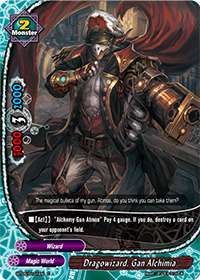
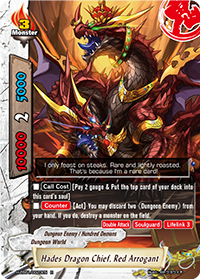

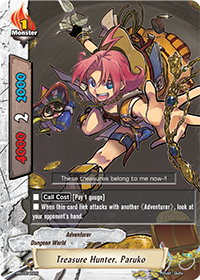
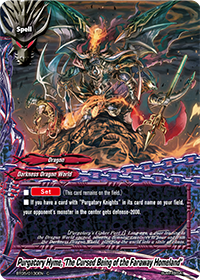
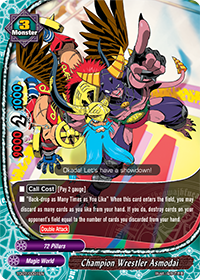
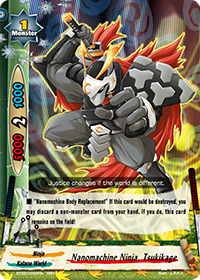

Wait Wut... This makes me even more confused... Welp I don't do math so I guess it can't be helped :P
ReplyDeleteBut so as I understand from this, Champion Asmodai can discard 4 times and destroy 2 monsters and another monster with Soulguard automatically, but for Tsukikage, since the opponent doesn't know how many times you'll body replacement, he can discard 5 times and destroy all monsters and you can choose to just not Body Replacement and make him waste those cards. Wait, now that I think about it, does that mean that Asmodai gets a chain for every destruction? (So, Like you can counter each discard) Welp... That's preety ridiculous.
I've had good and bad luck with Bushiroad so far. Buddyfight is very important to me because of my kids.
ReplyDeleteThey've always been very polite, but I'm not sure they have enough help/resources in the Rules department.
At the L.A. Regionals some players were using the ACT abilities during any of their playtimings since that's actually what their rules indicate. Way back in May of last year, they had that little update for advanced rules (that you now have to get through archival) that made it clear that the card must have Counter along with the ACT to be used outside of the main ability.
Because of the other Regionals coming up, and because I hadn't received an answer via email yet, I called them. I was told that the player(s) would need to ask the head judge at the tournament for a ruling or get one via email.
I found another email address, used it and tracked it this time. It sprang open quickly and often and I received the response that their official ruling is that the: Turn Player may use ACT during main phase only. I had quoted their own rules, showing their earlier versions and the current one and so once they responded I thanked them and wrote a blog about it on the Wiki, but asked them to please update the rules on the official Bushiroad Website (in english at 1.06) since it states that "The flow rules inside this file are more detailed compared to the rule book. As there have been many enquiries regarding these matters, they are specifically stated here. Please refer to this file for any queries and doubts regarding the rules of Future Card Buddyfight."
I said that a player can print out their official rules, use ACT during any of their own phases and if a ruling was called for, they could show it to the Head Judge. It was then, that I noticed the email had been opened in California, Texas and Singapore, and Now New York, and they replied that they had already sent it to the proper channels.
Unfortunately, the rules remain at Ver. 1.06 and for some reason, they have also left off all timings of the Final Phase. At the time of reviewing this, I had also read their Official Rules in Japanese as their most recent Floor rules indicated that if there was a discrepancy, then those would take precedence. I haven't checked since, but as of that timing, the Japanese Rules were the same. Play Timings allowed the use of any Ability for the Turn Player if the requirements were met.
Hope they fix it soon. I act as a Judge at tournaments sometimes and the various interpretations of the rules can cause unnecessary conflict, and, of course, wasted money and time.
I received the ruling in mid-May and I wished that they had redone their rules before the other Regionals. Here's to hoping that it happens before Continental!
BTW, I hope you have recovered well from your finals. I was usually lucky enough with my degrees to have performance based ones, but now and then the insane papers and tests killed me.
What you contribute to the community is very important and you certainly needed whatever time you needed. Hope the site continues to do well!
So, how about Card Burn? Any confirmation on how his cost payment works?
ReplyDeleteConfirmation was: declare the activation intent, your opponent gets to counter, and then you pay the cost (including the 4 gauge). So if your opponent responds by removing a card monster, you can hit that abort button and abandon ship. No 4 gauge investment needed.
Deleteoh no, this means I have prevented my friend's Cerberus from gaining soul by responding to calls >_< either cerberus call or calling a size one... if i read this article correctly, he should be able to "eat" his size 1 at least once before i can counter kill it right ??? T_T i feel so bad now
ReplyDeleteNo, you're still okay. Goes like this: Cerberus declares intent to add soul, your counter timing, and then you get to add the soul. You can still counter kill Cerby since his Act actually requires him to be on the field to resolve.
Deletethanks, now i can sleep better at night :)
DeleteOne important note is the fact that keyword abilities never activate, they just happen and cannot be responded to. Would it be worth pointing that out here, (particularly that soulguard doesn't go into all the chaos) in case people get confused over the Tsukikage example?
ReplyDeleteAlso:
A monster with an on-call ability (say, Rising Flare Dragon) enters the field and a Hades Fall goes onto standby. The call resolves, and the on-call ability activates. Is there a gap at any point for the turn player to cast, for example, a Dragon Barrier before the Hades Fall resolves?
As far as I know, after Hades fall, you are given one chance to counter that, so yeah, you should be able yo use Barrier.
DeleteKeywords are special and covered in a different article. I'll have that one properly updated and once that happens I'll link it from here.
DeleteTachikaze Master is right about your example.
Ok. Thank you both.
DeleteFrom Bushi's Ver 1.06 (with a few notes from me):
Delete2. Using automatic abilities
When the stated situation occurs, automatic abilities will go into stand-by.
2.1.1. The turn fighter chooses an automatic ability that is in stand-by.
When the effect chooses, choose any card stated in a public zone (field,face up soul, drop zone) that fulfills all the conditions of the effect.
If chosen, go to 2.2..
If there are no automatic abilities to choose, go to 2.1.2..
2.1.2. The non-turn fighter chooses an automatic ability that is in stand-by. (Here is where Hades Fall gets played by most. But the rules allow Hades Fall to be used at the discretion of the player even if the requirements to be able to use it are met.) When the effect chooses, choose any card stated in a public zone (field, face up soul, drop zone) that fulfills all the conditions of the effect.
If chosen, go to 2.2.. If there are no automatic abilities to choose, go to 2.4..
Timing to use a [Counter] by the fighter who did not choose to use an automatic ability occurs. (This is When you cast Dragon Barrier)
2.2.1. The fighter who chose not to use an automatic ability may use an ability with [Counter] up to only once.
2.2.2. ★ Rule Resolution ★
2.2.3. Should the fighter who chose not to use an automatic ability use a [Counter],that [Counter] activates and resolves.
2.2.4. ★ Rule Resolution ★
Resolve the abilities from 2.1.1. or 2.1.2.
So your Dragon Barrier will resolve first!
Just a warning though. Many players may treat Hades Fall like a COUNTER because it usually happens in response to something the Other Player does. And because it is primarily used by Katana players in the Main Phase, then they think it can't be countered since the turn player cannot Counter back in the Main Phase.
Great example and question.
Best to you!
Hello Blaise :) I need some help understanding "once per turn" abilities... pls forgive my ignorance. for example Dragowizard Burning Wand with the act skill rest this card deal 1 dmg to your opponent. you may only use this ability once per turn. does that mean if i bounce it with Mgoodbye, I can't rest it again? also if I have 3 on the field, does that mean I can only rest 1? Also with the new mechanic, thundermine, it only triggers once per turn, same question, is that once per card or once for the whole field? thanks
ReplyDeleteBurning Wand's effect states "You may only use Burning Wand once per turn" meaning even if you bounce him, you can only use his Rest effect once per turn. This is ability-specific.
DeleteThunder Mine, to my knowledge, states that "you may only use this ability once per turn" which is specifying the ability of that specific monster (so monser-specific). Meaning that you can use Thunder Mine as many times as you want, once per specific monster (which gets reset per bounce, etc)
thanks :)
DeleteI want to ask, what if there 2 monster with the same thunder mine effect, for example, I have 2 Stranger Dilemma, my opponent use a spell, does he got 2 thunder mine damage or just 1 because it's the same type thunder mine?
DeleteIt should be 2 damage, unless the specific Thunder Mine is restricted.
DeleteAlso the 2 damage is dealt 1+1, of course.
Ohayo! Blaise-sama :) i have another question for you: about cards with "cannot be destroyed" for example Ganzallar, can my opponent still use Jacknife Thunderstorm to pay 2 life if he targets Ganzallar? and can the DarkHero Spell that destroys an item and gain 2 life be used agains Ritter just to gain life (and not to destroy ritter)? since Bushi usually does a "do as much as you can policy" im leaning towards yes on these questions but I really would like your opinion thanks.
ReplyDeleteAs long as there's a legal target, you can use spells and/or abilities that target.
DeleteUpon resolution (after paying the cost), if the target can't be destroyed then nothing happens.
So yes. You can pay cost for effects that effectively do nothing. But if an effect requires a target then you must have a legal target.